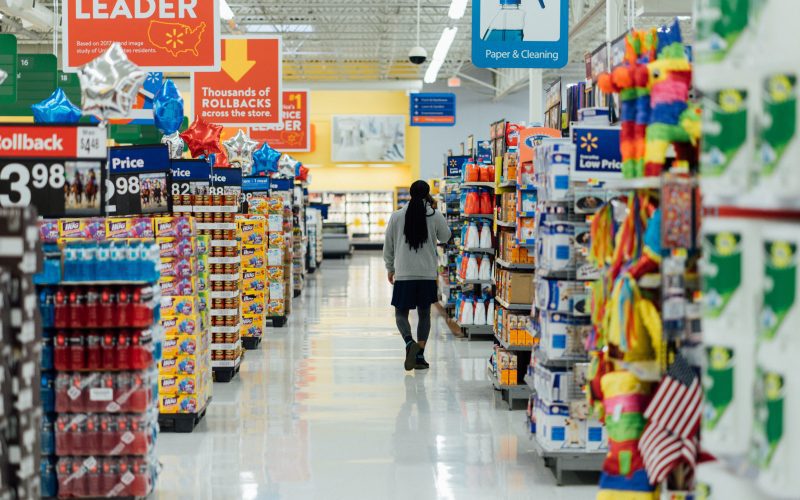Are you tired of constantly juggling your grocery bills? Do you often find yourself running low on cash by the end of the month, unable to afford basic necessities? If so, you’re not alone. Many people struggle with managing their finances when it comes to buying groceries. That’s where Buy Now, Pay Later options come into play. It sounds tempting – pay for your groceries later! But before jumping in headfirst and using this payment method without knowing its pros and cons, it’s important to understand how it works and whether or not it’s right for you. In this blog post, we’ll explore the ins and outs of Buy Now, Pay Later for grocery shopping so that you can make an informed decision about whether or not this option is suitable for your needs.
What is Buy Now, Pay Later?
Buy Now, Pay Later (BNPL) is a payment method that allows you to purchase items now and pay for them at a later date. This option has become increasingly popular in recent years, especially for online shopping and grocery purchases. The way it works is simple – instead of paying the full amount upfront, you can choose to spread out your payments over several weeks or months.
When using BNPL for grocery shopping, you typically have two options: either apply for a credit account with the supermarket or use a third-party BNPL provider. With the former option, you’ll be able to shop exclusively at that particular store and may receive additional benefits such as rewards points or discounts. On the other hand, using a third-party BNPL provider gives you more flexibility in terms of where you can shop but may come with higher interest rates.
While Buy Now, Pay Later may sound like an attractive option when money is tight, it’s important to remember that this isn’t free money – there are fees and interest charges associated with this payment method. It’s also crucial to read all terms and conditions carefully before signing up for any BNPL service so that there aren’t any surprises down the line.
How does Buy Now, Pay Later work?
Buy Now, Pay Later is a payment option that allows you to purchase items without paying for them upfront. Instead, you can pay for your purchases in installments over time. But how exactly does it work?
Firstly, when checking out with Buy Now, Pay Later as the payment option, you will be asked to create an account with the provider and enter some personal details such as your name and address. Once approved, the provider will offer a credit limit which determines the maximum amount of money you can borrow.
When making a purchase using this method, the cost of your item(s) will be split into equal payments over several weeks or months depending on what plan you choose. You’ll typically make these payments via automatic deductions from your debit card or bank account.
It’s important to note that while Buy Now, Pay Later may seem like an easy way to manage expenses at first glance, it also comes with fees and interest rates if not paid back on time. It’s always best practice to read through terms and conditions carefully before signing up for any payment options.
In summary, Buy Now, Pay Later works by allowing customers to buy goods on credit in exchange for splitting the total cost into smaller payments made over time.
Pros and Cons of using Buy Now, Pay Later
Buy Now, Pay Later services have become increasingly popular in recent years. They offer customers the ability to purchase products without having to pay for them upfront and instead spread out payments over time. While this may sound like a great option, it’s important to consider both the pros and cons before using these services.
One of the main advantages of Buy Now, Pay Later is that it allows individuals who don’t have cash readily available to make purchases they otherwise couldn’t afford. This can be particularly helpful when unexpected expenses arise or during times of financial hardship.
Another benefit is that some Buy Now, Pay Later providers offer interest-free periods which means you won’t have to pay more than the original cost of your purchase if you repay within the stipulated timeframe. Additionally, many retailers partner with these services which makes it easier for consumers to complete transactions online.
However, there are also drawbacks associated with Buy Now, Pay Later options. These include higher interest rates on unpaid balances after an initial promotional period expires – meaning you could end up paying significantly more than what was originally owed once fees and charges are factored in.
Additionally, missed payments can damage your credit score as well as result in late payment fees from both the provider and retailer involved – further adding extra costs on top of already-existing debt obligations.
While Buy Now,P ay Later can provide short-term relief for those needing immediate access to funds without upfront payment requirements; potential long-term consequences such as high-interest rates and negative impact on credit scores should be weighed carefully before making any decisions about whether or not this service is right for your needs.
What are some alternatives to using Buy Now, Pay Later?
While Buy Now, Pay Later may seem like a convenient option for grocery shopping, it’s not always the best choice. If you’re looking for alternatives to Buy Now, Pay Later, there are several options available.
One alternative is to use a credit card with rewards or cashback programs. You can earn points or cash back on your purchases and pay off your balance in full each month to avoid interest charges.
Another option is to use layaway programs offered by some retailers. This allows you to make payments over time without accruing any interest or fees.
If you’re worried about overspending with credit cards or layaway programs, consider using budgeting apps like Mint or YNAB (You Need A Budget) that help track your expenses and keep you on track financially.
Simply creating a grocery list before heading out can also be an effective way of managing your spending and avoiding impulse buys.
By exploring these alternatives instead of relying solely on Buy Now, Pay Later options, you’ll have more control over your finances while still being able to shop for groceries conveniently.
Conclusion
After exploring the pros and cons of Buy Now, Pay Later for grocery shopping, it is clear that there are both benefits and potential drawbacks to using this payment method. While it can offer convenience and flexibility, it also comes with the risk of accumulating debt and potentially impacting credit scores.
Before deciding whether or not to use Buy Now, Pay Later for your grocery shopping needs, consider your personal financial situation and spending habits. If you have a solid budget in place and are confident in your ability to make payments on time, then this may be a viable option for you. However, if you struggle with managing debt or tend to overspend without adequate planning, then it may be best to avoid this payment method altogether.
Ultimately, the choice is yours. By understanding how Buy Now, Pay Later works and weighing its pros and cons against your own needs and circumstances, you can make an informed decision about whether or not it’s right for you.












